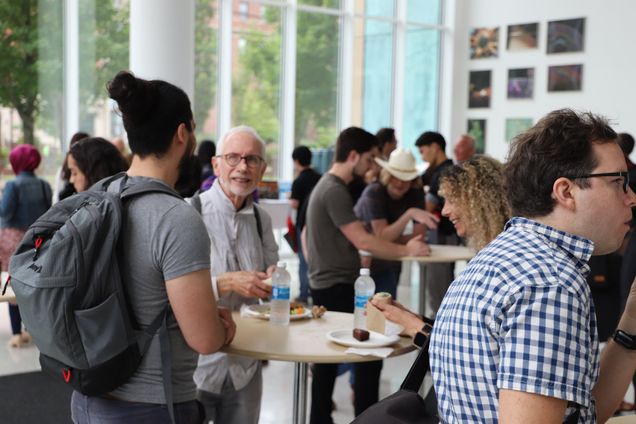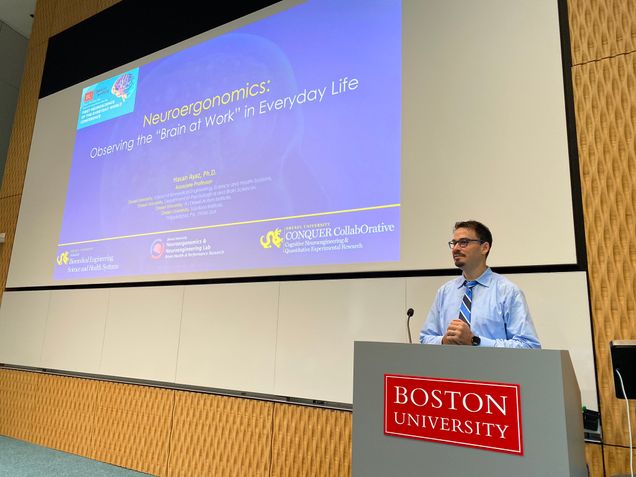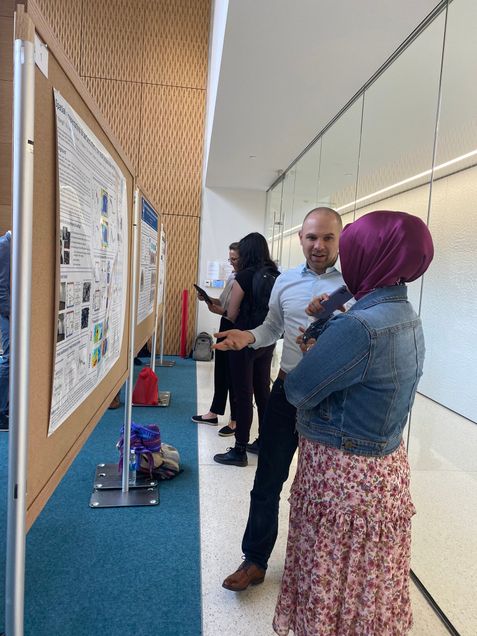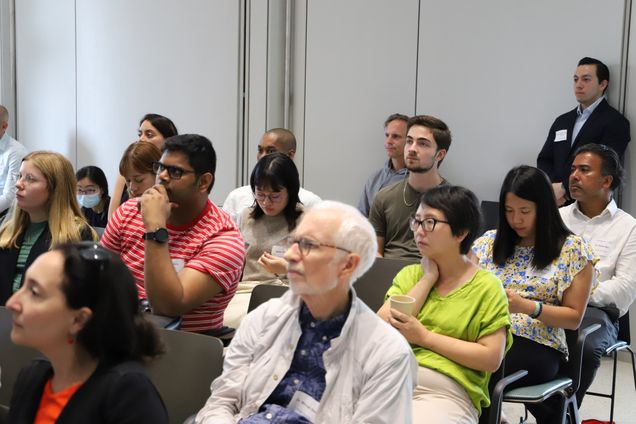First Neuroscience of the Everyday World Conference at Boston University, co-hosted by Chen Institute
Introduction to the Conference
Neuroscience in the Everyday World is a new avenue of research that Boston University’s Center for Brain Recovery, Neurophotonics Center, and researchers alike are exploring with great interest. The use of fNIRS, machine learning, eye tracking, and other technologies are making it possible for the brain to be studied in real world environments, as opposed to a traditional laboratory setting, which allows for a better understanding of how we interact with our surroundings. Keynote speaker Joy Hirsch of Yale University noted that we are embarking on a new frontier of understanding the brain.

Keynote Speakers and Presentations
The conference -organized by Swathi Kiran and David Boas of Boston University, and Alex von Lühmann of TU Berlin, BIFOLD – brought together hundreds of people from around the world, to attend in person or virtually, and discuss ideas regarding the exploration of this new field of study. Each symposium had a theme, and invited three speakers with applicable research to present their work, ranging from continuous monitoring of the brain in the real world to clinical applications for monitoring neurological disorders and development. Eleven speakers presented at the conference including Ralph Adolphs of the California Institute of Technology, who attended in person to present, Eyetracking in Autism Using Webcams and Smartphones. Conference attendees were also joined by Bettina Sorger, presenting virtually from Maastrict University, Netherlands about, fNIRS for Brain-based Interaction and Neurofeedback Learning in the Everyday World.

To conclude the conference, the Center for Brain Recovery’s Founding Director, Swathi Kiran, presented her recent research in the center, Using fNIRS to understand everyday interactions and discourse in post-stroke individuals with aphasia. Her presentation highlighted the work being done at the Center for Brain Recovery at Boston University by faculty and PhD students under her leadership.

Following these presentations, attendees were able to ask questions regarding the topics presented and network with each other to open avenues for future collaborations in research. Another highlight of the conference was the poster presentation, as 24 projects were displayed for discussion with the authors. One of which being incoming Assistant Professor of Biomedical Engineering, Matthias Stangl, who brought forward his research on Spatial representations for self and others in the medial temporal lobe of freely-moving humans.

The Future of the Conference
The First Neuroscience of the Everyday World Conference was a huge success. Its performance demonstrates the importance of collaboration in research, as the conference helps to bring together attendees from around the world to discuss this new field of study. This is key to making progress and developments in brain research that could change the way we understand our brain in the real world. We hope to continue more collaboration next year, as we begin planning for the second Neuroscience of the Everyday World Conference at Boston University.

Didn’t get to attend the conference? Watch it on Youtube!
All speakers’ presentations and discussion panels are posted on the Center for Brain Recovery’s Youtube channel: Starting with Keynote 1 by Joy Hirsch of Yale University and her talk on Wild-Type Neuroscience: Challenges, Progress, and Future Directions for Understanding the Brain in Real-Life Action, August 29th, 2023.
Want to read more?
Check out Boston University’s Neurophotonics Center, and their article on the conference posted earlier this month: First Neuroscience of the Everyday World Conference Draws 300+ Attendants from Around the World.